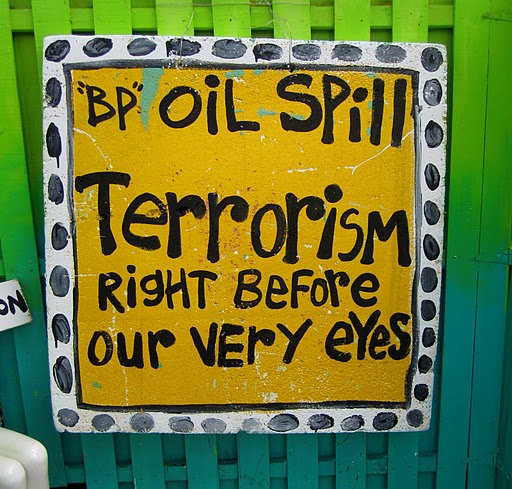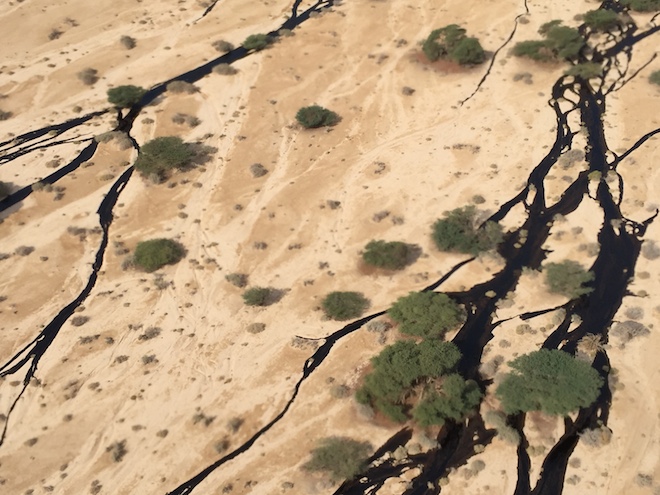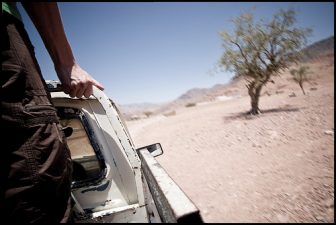When containing a massive disaster like an oil spill, small microbes play a big role.
Arezoo Ardekani, a Purdue University associate professor of mechanical engineering, has published research that describes the complex hydrodynamics of microorganisms at liquid-liquid and gas-liquid interfaces, showing that microbes may flock to areas where surfactant has been applied. This is important news for the western east oil producing nations, as many oil spills threaten the Red Sea, Indian ocean and Mediterranean Sea. Bacteria are known to break down oil from oil spills but if we know how the system works we can speed it up and localize the process, when needed. Here’s how.
On April 20, 2010, a catastrophic explosion aboard the Louisiana oil rig Deepwater Horizon caused an underwater wellhead to rupture, discharging oil into the Gulf of Mexico. It took 87 days to cap the underwater well, by which point more than 200 million gallons of oil had discharged into the gulf. Officials used many different tactics to contain the damage of the oil spill, such as relying on microbes to digest hydrocarbons, and using dispersant (or surfactant) chemicals to break up oil slicks, making it easier for the microbes to digest.

Deepwater Horizon oil spill, Gulf of Mexico
“Microbes were the ‘first responders’ to the oil spill,” Ardekani said. “They remediated a significant amount of hydrocarbons. But the Gulf of Mexico is a big place. How did so many microbes find this oil?”
As Ardekani discovered, the performance of the microbes was affected by the surfactant, but not how anyone expected.
“There are several things that cause microorganisms to move,” she said. “For example, the microbes near an oil spill may be motivated by chemotaxis, i.e., picking up the chemical trail of a potential food source. But the surfactant actually created a hydrodynamic phenomenon that caused microbes to gather in even greater numbers.”

Ardekani’s team tested its hypothesis in the lab, using E. coli cells, single-celled bacteria, whose behavior is well-known. The researchers 3D-printed a small chamber, where they could microscopically observe the cells’ movements in a liquid suspension, and then tested what happened when that liquid came into contact with another liquid of different viscosity. The results showed that the E. coli cells accumulated at higher density at the liquid-liquid interfaces, and even greater density at gas-liquid interfaces.
Surfactants applied to an oil spill attract microorganisms, due to complex hydrodynamics that were recently discovered by Purdue researchers.
“Those surfactants changed the interface property,” Ardekani said. “If microbes are hydrodynamically attracted to gas-liquid interfaces, the presence of surfactants made it even more attractive.”
Using this experiment as a guide, researchers built theoretical models that successfully explained the complex fluid dynamics at these gas-liquid interfaces. Their research has been featured on the cover of the journal Soft Matter, and also published in the journal Physical Review E.
The use of dispersants during the Deepwater Horizon oil spill was not without controversy; Scientists disagreed on whether the chemicals did more harm than good for the ecosystem. In the aftermath of the disaster, BP spent $500 million to establish the Gulf of Mexico Research Initiative, an independent organization that funds thorough scientific research in mitigating the effects of the spill.
Ardekani’s research is one of the results of that effort.
“We didn’t know any of this before the spill,” Ardekani said. “The main reason they used dispersants was to break up the size of the oil droplets. But now we have discovered a new hydrodynamic mechanism, that adding surfactant causes microbes to spend more time near oil droplets. That, combined with chemotaxis, may potentially give microbes more time to decompose these hydrocarbons.”



